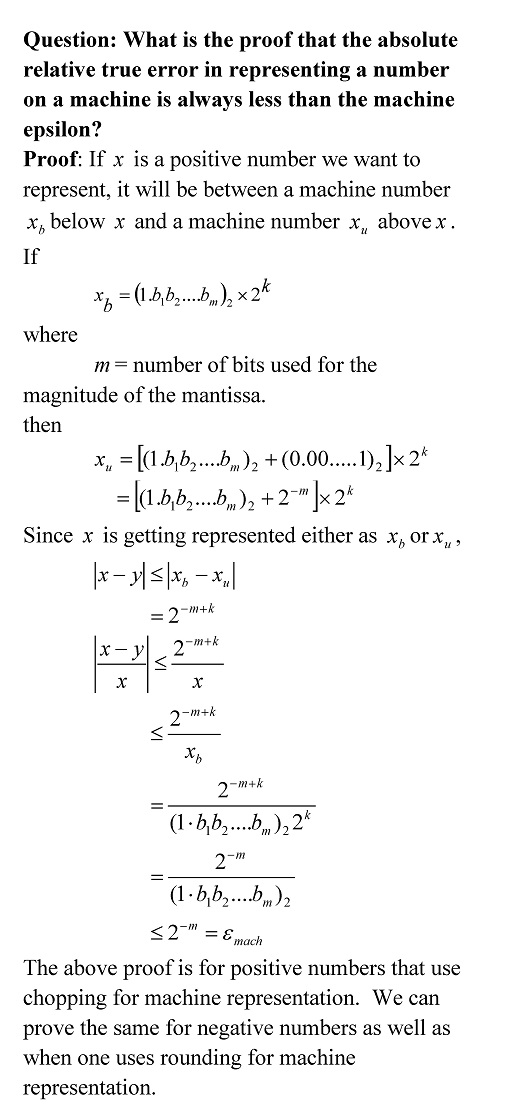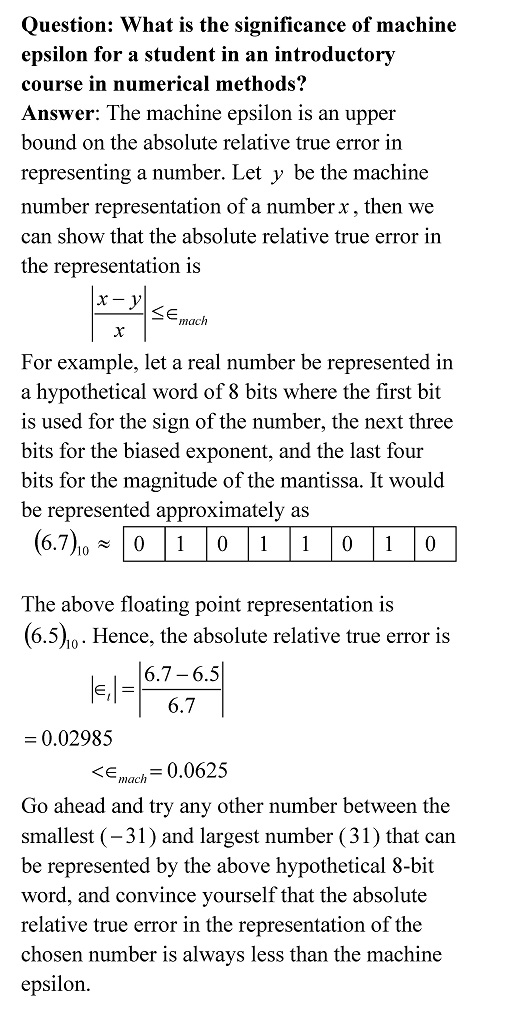In the previous blog posts, we answered
- Question 1 of 5 “What is machine epsilon?” and
- Question 2 of 5 “How do I find machine epsilon using MATLAB code?”
- Question 3 of 5: How is machine epsilon related to the number of bits used to represent a floating point number?
- Question 4 of 5: What is the significance of machine epsilon for a student in an introductory course in numerical methods
Here we answer the last question.

- _________________
This post is brought to you by
- Holistic Numerical Methods Open Course Ware:
- Numerical Methods for the STEM undergraduate at http://nm.MathForCollege.com;
- Introduction to Matrix Algebra for the STEM undergraduate at http://ma.MathForCollege.com
- the textbooks on
- the Massive Open Online Course (MOOCs) available at
- Holistic Numerical Methods Open Course Ware:
